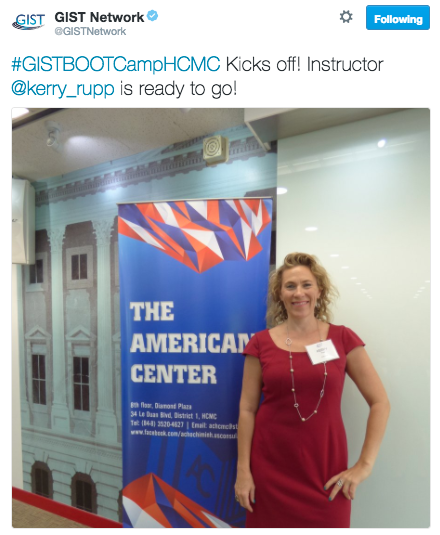This article originally appeared on GISTNetwork.org.

Far too often, easily avoided obstacles derail startups with great potential. In their defense, many entrepreneurs don’t know the types of problems they will face when launching a new venture. We recently spoke with our GIST Startup Boot Camp Vietnam instructors, Adam Bates and Kerry Rupp about identifying and overcoming common obstacles facing early-stage startups.
Not knowing what you don’t know can turn into a costly learning curve for new entrepreneurs. What are some common hurdles that early-stage innovators don’t know that they don’t know?
Adam Bates: Many startups don’t understand the customer’s pain points at the beginning of their development. They’ve often gone too far to build a solution to a perceived problem – not a real problem.
Kerry Rupp: To build on Adam’s point, startups need to first understand the market. They need to live a day-in-the-life of their customers and prioritize their pains and gains in the absence of talking about ideas or solutions. If entrepreneurs ask for feedback on their solution too soon, they simply get platitudes from the customer (“Sure, that’d be good”). They may also miss the opportunity to discover a real solution from the customer’s perspective.
Another common issue for startups: knowing the key players in the buying decision. It’s important to know who to bring into the conversation. Knowing your buyers is crucial for B2B decisions, but can be also true for B2C decisions (when the spouse or parent weighs in on a decision, for example). Not knowing the buyer can seriously impact conversion rates and sales cycle time, which can throw a profit and loss statement off if the assumptions are far from expected.
What comes first: identifying your potential audience, or your existing competition?
Adam Bates: Identify your potential customer and their needs first. Looking at your competition only makes you reactionary. You may miss a big opportunity that they have overlooked. However, you would never begin investing in building a solution without doing some benchmarking against the competition.
What are the three key questions an entrepreneur should ask themselves when they think they have a good idea for a business?
Adam Bates:
1. Are there enough customers with a strong need for a solution?
2. Can I bring together the required resources to solve that problem?
3. Can I make a business model that is repeatable and scalable?
Kerry Rupp: Early-stage startups need to realize that their innovation is something they think is a good idea. At this stage, they need to test whether the market agrees with them.
They should identify:
1. For whom do I think my solution solves pains or creates gains?
2. What questions can I ask them to understand whether my hypotheses are supported?
3. How fast can I get out the door to ask enough prospective customers those questions to test those hypotheses?
What are some common mistakes startups make when pitching potential investors?
Adam Bates: Talking about their technology/solution without first framing the problem.
Kerry Rupp: I frequently notice four common mistakes when startups pitch investors:
Asking for an NDA
Overvaluing the idea and not understanding the relevance of their ability to execute (for example, the team’s background/skills, preferably with domain expertise)
Having built a product in the absence of initial customer interviews to vet the opportunity and truly understand their needs
Explaining how they’re going to SPEND the funds raised without showing the milestones they’ll ACHIEVE with the funds
What are some common misconceptions about business canvas models? How can startups maximize that framework?
Adam Bates: Value propositions are NOT features. They need to drill down to the “why” of their features to find that value proposition.
Kerry Rupp: Thinking they’re finished. A Business Canvas Model should be a living document with ongoing iterations.






